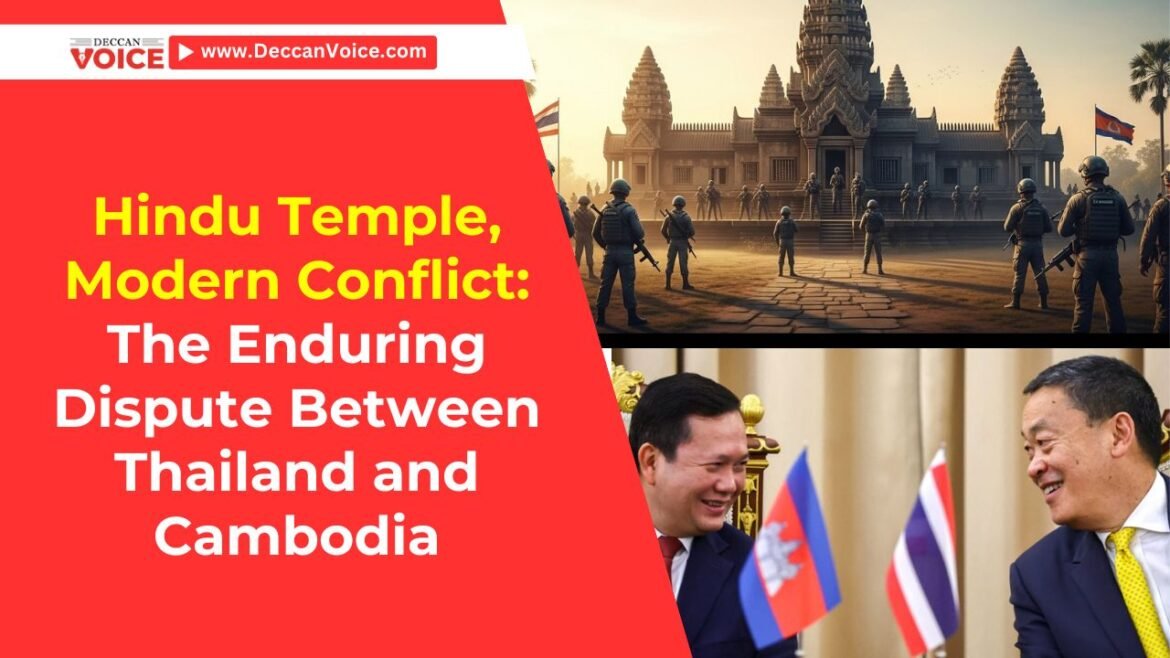Table of Contents
For over a century, the ancient Hindu temple of Preah Vihear, perched dramatically atop the Dângrêk Mountains, has been at the heart of a persistent and sometimes violent territorial dispute between Thailand and Cambodia. This magnificent 11th-century monument, a testament to the grandeur of the Khmer Empire, has become far more than a historical site; it is a potent symbol of national pride, colonial legacies, and unresolved border demarcations, leading to recurring military clashes and diplomatic tensions.
A Legacy of Shifting Borders and Colonial Maps
The roots of the Preah Vihear conflict stretch back to the late 19th and early 20th centuries, during the period of French colonial rule in Cambodia. In 1907, French surveyors drew a map to delineate the border between French Indochina (which included Cambodia) and Siam (now Thailand). This map, based on a watershed line, controversially placed the Preah Vihear temple within Cambodian territory, despite its easier accessibility from the Thai side. Thailand initially accepted this map, but later contested its validity, arguing that it had not been formally or knowingly agreed upon in its entirety.
Following Cambodia’s independence from France in 1953, Thai forces occupied the temple in 1954. Cambodia protested, taking the case to the International Court of Justice (ICJ) in 1959.
The ICJ’s Rulings and Lingering Disagreements
In 1962, the ICJ delivered a landmark ruling, awarding sovereignty over the Preah Vihear temple to Cambodia. The court cited Thailand’s implicit acceptance of the 1907 map over several decades as a key factor. Thailand reluctantly complied, withdrawing its troops and returning artifacts.
However, the 1962 ruling left a crucial aspect unresolved: the exact demarcation of the land surrounding the temple. Thailand continued to claim a 4.6 square-kilometer area adjacent to the temple, insisting the border had never been officially settled in this particular zone.
Tensions reignited in 2008 when Cambodia successfully lobbied UNESCO to list Preah Vihear as a World Heritage Site. This move, celebrated by Cambodians, was met with strong nationalist protests in Thailand, who feared it would solidify Cambodia’s claim over the disputed surrounding territory. This led to a series of armed clashes between Thai and Cambodian troops between 2008 and 2011, resulting in casualties and displacement on both sides. In 2013, Cambodia again approached the ICJ for an interpretation of its 1962 judgment. The court reaffirmed its previous decision, clarifying that Cambodia’s sovereignty extended to the entire promontory of Preah Vihear. Despite this, Thailand continues to dispute parts of the border.
Recent Escalations and the Search for Peace
The dispute remains a fragile flashpoint, with tensions escalating again in May 2025 after a Cambodian soldier was killed near the disputed area, followed by landmine blasts injuring Thai soldiers in July. This has led to renewed military clashes, including artillery fire and reports of airstrikes, resulting in civilian casualties and diplomatic expulsions. Both nations have accused each other of initiating hostilities, reinforcing troops along the border and closing checkpoints.
Efforts by regional bodies like ASEAN to mediate have been ongoing, though a lasting resolution remains elusive. While both countries express a desire for peaceful resolution, nationalist sentiments and differing interpretations of historical agreements and maps continue to fuel the conflict. The ancient Preah Vihear temple, a testament to shared cultural heritage, tragically remains at the core of a modern geopolitical struggle, symbolizing the complex interplay of history, pride, and unresolved borders in Southeast Asia.



